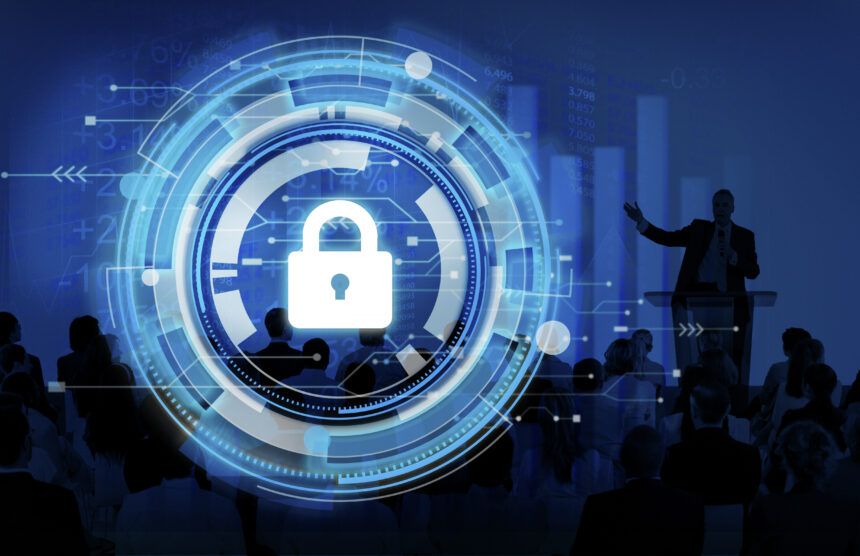The digital landscape is evolving rapidly, and with it, cyber threats are becoming more sophisticated. As we step into 2025, organizations and individuals must stay vigilant against emerging cyber risks. This article explores the biggest cybersecurity threats of 2025 and provides actionable strategies to stay protected.
The Rising Cyber Threats in 2025
Cybercriminals are leveraging advanced technologies like artificial intelligence (AI), quantum computing, and automation to launch more complex attacks. From ransomware to deepfake scams, the digital world is becoming increasingly dangerous. Here are some of the most pressing cybersecurity threats in 2025:
1. AI-Powered Cyber Attacks
AI has transformed the way hackers operate. Cybercriminals are now using machine learning algorithms to automate attacks, making them more precise and harder to detect. These AI-driven threats include:
- Automated Phishing Attacks: AI can craft highly convincing phishing emails by mimicking writing styles and personalizing messages.
- AI-Powered Malware: Malicious software that can adapt and change its code to avoid detection.
- Deepfake Scams: Fraudsters are using AI-generated videos and voices to impersonate CEOs, politicians, and even loved ones to manipulate victims into transferring money or sharing sensitive information.
2. Ransomware Evolution
Ransomware remains a top cybersecurity threat, but in 2025, it has evolved to become more dangerous:
- Double and Triple Extortion: Hackers not only encrypt data but also threaten to leak it if ransom demands are not met. Some attackers even go further, targeting customers and partners of the victim organization.
- Ransomware-as-a-Service (RaaS): Cybercriminals now sell ransomware toolkits to inexperienced hackers, making attacks more widespread.
- Targeting Critical Infrastructure: Healthcare, energy, and government sectors are prime targets, with hackers disrupting essential services.
3. Quantum Computing Threats
While quantum computing offers immense benefits, it also presents significant cybersecurity risks. Quantum computers have the potential to break current encryption methods, making traditional security systems obsolete. Threats include:
- Breaking RSA and AES Encryption: Encrypted financial transactions, government communications, and personal data could become vulnerable.
- Quantum-Powered Cyber Attacks: Hackers with access to quantum technology could decrypt sensitive information in real-time.
4. Supply Chain Attacks
Hackers are now targeting vendors and suppliers to gain access to larger organizations. Supply chain attacks involve:
- Infecting Software Updates: Cybercriminals compromise software updates to distribute malware across multiple businesses.
- Third-Party Exploitation: Attackers infiltrate suppliers with weaker security defenses to access corporate networks.
- Compromising Cloud Services: With businesses relying heavily on cloud computing, cybercriminals are targeting cloud infrastructure to steal data.
5. Internet of Things (IoT) Vulnerabilities
The increasing number of smart devices has created new security challenges. IoT devices, from smart home gadgets to industrial sensors, are often poorly secured. Key threats include:
- Botnet Attacks: Hackers take control of thousands of IoT devices to launch massive DDoS attacks.
- Unauthorized Access: Weak passwords and outdated firmware make IoT devices easy targets.
- Data Privacy Issues: Smart devices collect vast amounts of personal data, making them attractive to cybercriminals.
6. Cloud Security Risks
As businesses continue to migrate to the cloud, cybercriminals are shifting their focus to cloud-based attacks. Major threats in 2025 include:
- Misconfigured Cloud Settings: Many organizations fail to secure their cloud storage properly, leading to data leaks.
- Insider Threats: Employees with access to cloud systems may misuse their privileges to steal or expose sensitive data.
- Cloud Hijacking: Attackers gain control of cloud accounts to manipulate or delete data.
7. Social Engineering Attacks
Humans remain the weakest link in cybersecurity. Attackers use psychological manipulation to trick individuals into revealing confidential information. Common tactics in 2025 include:
- Advanced Phishing Scams: AI-powered phishing attacks can create highly personalized emails that bypass traditional security filters.
- Voice Phishing (Vishing): Deepfake technology enables hackers to create fake phone calls from trusted contacts.
- Business Email Compromise (BEC): Hackers impersonate executives to trick employees into transferring funds or sharing sensitive information.
How to Stay Safe from Cyber Threats in 2025
With cyber risks increasing, individuals and organizations must take proactive steps to enhance their security posture. Here’s how:
1. Strengthen Passwords and Enable Multi-Factor Authentication (MFA)
- Use complex passwords with a mix of uppercase, lowercase, numbers, and special characters.
- Avoid using the same password for multiple accounts.
- Enable MFA for all online services to add an extra layer of security.
2. Keep Software and Systems Updated
- Regularly update operating systems, applications, and firmware to patch vulnerabilities.
- Enable automatic updates on all devices.
- Remove outdated or unsupported software that could be exploited.
3. Invest in AI-Driven Cybersecurity Solutions
- Use AI-powered threat detection systems to identify and block cyber threats in real-time.
- Deploy behavior-based security tools that detect anomalies in network activity.
- Implement endpoint detection and response (EDR) solutions for proactive threat monitoring.
4. Educate and Train Employees
- Conduct regular cybersecurity awareness training to prevent social engineering attacks.
- Simulate phishing attacks to test employees’ ability to identify scams.
- Establish a clear cybersecurity policy and enforce best practices.
5. Secure IoT Devices
- Change default passwords on smart devices.
- Regularly update firmware to fix security flaws.
- Segment IoT devices on separate networks to prevent cross-contamination in case of an attack.
6. Backup Data Regularly
- Implement a 3-2-1 backup strategy (three copies of data, two different storage types, one offsite backup).
- Use encrypted backups to protect against ransomware.
- Test data recovery plans to ensure quick restoration in case of a cyber incident.
7. Monitor and Respond to Threats
- Use security information and event management (SIEM) tools to analyze security logs.
- Set up intrusion detection and prevention systems (IDPS).
- Establish an incident response plan to minimize damage during a cyberattack.
8. Implement Zero Trust Security Model
- Adopt a “never trust, always verify” approach to network security.
- Enforce least privilege access to restrict users to only the data they need.
- Continuously monitor user behavior for suspicious activities.
Final verdict
As we enter 2025, cyber threats are more advanced than ever. With AI-driven attacks, quantum computing risks, and evolving ransomware tactics, businesses and individuals must stay ahead of cybercriminals. By adopting strong cybersecurity measures, such as multi-factor authentication, AI-based security solutions, and continuous education, we can reduce our exposure to these threats. Staying vigilant and proactive is the key to cybersecurity resilience in the digital age.
FAQs
1. What is the biggest cybersecurity threat in 2025?
AI-powered cyberattacks, quantum computing risks, and ransomware evolution are among the most significant threats.
2. How can I protect my business from ransomware?
Regular data backups, employee training, strong endpoint protection, and implementing zero trust security can help safeguard against ransomware.
3. Are smart devices safe to use?
While smart devices offer convenience, they are vulnerable to cyberattacks. Securing them with strong passwords, regular updates, and network segmentation can enhance safety.
4. How can AI improve cybersecurity?
AI helps detect and prevent cyber threats in real-time by analyzing patterns, identifying anomalies, and automating threat response.
5. What should I do if I fall victim to a cyberattack?
Immediately disconnect affected systems, report the incident to IT security teams, reset passwords, and notify relevant authorities to mitigate damage.






